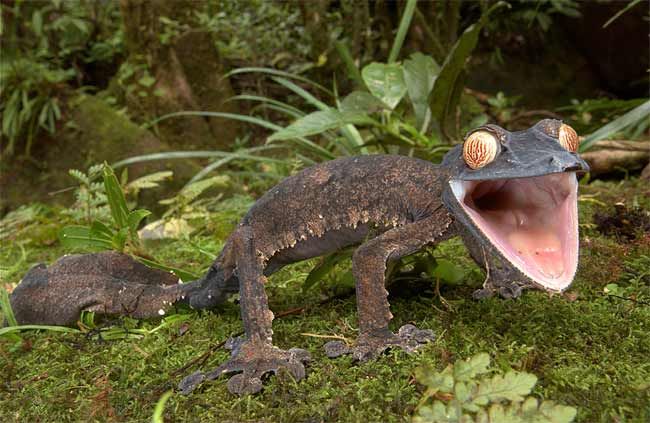Freaks of Madagascar Get Protection Plan

Loads of freakish animals, from fingertip-size chameleons to bug-eyed lemurs, crowd the island of Madagascar. Now researchers have combed the island's nooks and crannies to create a map of critical animal hideouts in need of protection.
The map is part of a new plan to expand the current reserve areas, boosting the number of species protected within them from some 70 percent to 100 percent, the researchers say.
The plan is based on a new computer model designed to spot regions that would give refuge to the greatest number of high-priority species. More than 2,300 species, including ants, frogs, geckos, butterflies and plants, were included.
Two lemurs given priority due to dwindling real estate included Coquerel’s sifaka and the Decken’s sifaka. Madagascar, the fourth largest island in the world, is home to many species that are only found there, including lemurs (which are primates like us humans), three bird families, six species of baobab trees and the fossa – the mongoose-like mammal feared by the lemurs in the animated feature film "Madagascar."
Some of the animals highlighted in the conservation plan include:
Greater bamboo lemur — This critically endangered bamboo eater once roamed much of Madagascar, but is now isolated to a few restricted spots.
Giant butterfly (Pharmacophagus antenor) — Madagascar's largest butterfly lives in the island's spiny deserts and forests.
Sign up for the Live Science daily newsletter now
Get the world’s most fascinating discoveries delivered straight to your inbox.
Malagasy poison frogs — These colorful, yet toxic, frogs are endemic to Madagascar.
Giant leaf-tailed gecko (Uroplatus fimbriatus) — A rain-forest dweller endemic to Madagascar, this large gecko has suffered habitat loss. (With no eyelids, this gecko uses its tongue for dust-removal.)
Amazing ants — Madagascar is crawling with the oddballs, including the Trap Jaw ant (Odontomachus coquereli) and the Dracula ant (Mystrium mysticum).
The study, detailed in the April 11 issue of the journal Science, also identified areas that had been neglected in past conservation assessments, such as the central plateau massifs and coastal forests.
- Video: Geckos' Talented Tails
- Top Ten Species Success Stories
- 10 Amazing Things You Didn't Know about Animals
Jeanna Bryner is managing editor of Scientific American. Previously she was editor in chief of Live Science and, prior to that, an editor at Scholastic's Science World magazine. Bryner has an English degree from Salisbury University, a master's degree in biogeochemistry and environmental sciences from the University of Maryland and a graduate science journalism degree from New York University. She has worked as a biologist in Florida, where she monitored wetlands and did field surveys for endangered species, including the gorgeous Florida Scrub Jay. She also received an ocean sciences journalism fellowship from the Woods Hole Oceanographic Institution. She is a firm believer that science is for everyone and that just about everything can be viewed through the lens of science.












